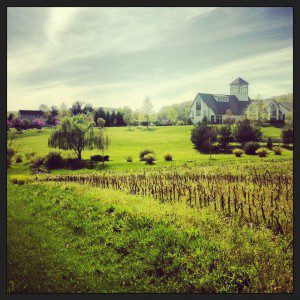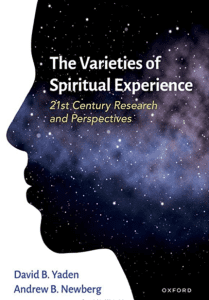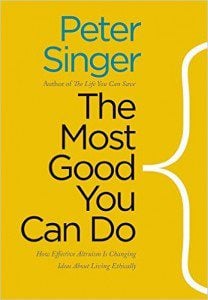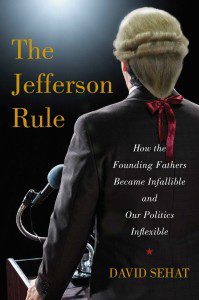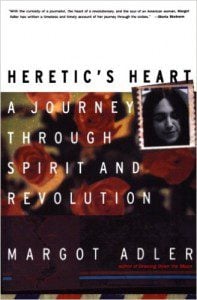Wendell Berry is the author of more than fifty books of poetry, fiction, and essays, and for more than forty years, he has lived and farmed with his wife, Tanya Berry, in Kentucky. Berry is also a well-known environmental activist, and he will be present to participate this summer at the annual Unitarian Universalist General Assembly, which this year will be in Louisville, Kentucky. Berry will be joining thousands of Unitarian Universalists from around the continent on Thursday, June 20 at a Public Witness event calling for greater Environmental Justice in this country. In particular the goal is to raise aware about the dangers and impact of practices like mountaintop removal mining and horizontal fracking. The UUA website’s description of this event says, “in order to change how we get our energy, we must first use the energy within all of us to make a change.”
On this Earth Day, I’m reminded of Berry’s 2009 poem “A Speech to the Garden Club of America” in which he names the tension that many of us wrestle with as we seek a better, more sustainable way forward regarding humanity’s use of our planet’s limited resources. As an accomplished environmental author, activist, and speaker, Berry is an understandable choice to be invited to speak to the Garden Club of America. But the same life’s work that makes him eminently qualified to fly around the country promoting environmental justice also makes him aware that a jet-set lifestyle undercuts the work of ecological sustainability he’s trying to promote.
Presumably responding to the accolades of whomever introduced him before he was to deliver a speech to The Garden Club of America, Berry begins his poem,
Thank you. I’m glad to know we’re friends, of course;
There are so many outcomes that are worse.
But I must add I’m sorry for getting here
By a sustained explosion through the air,
Burning the world in fact to rise much higher
Than we should go….
We speak of it
As “fuel” while we burn it in our fit
Of temporary progress, digging up
An antique dark-held luster to corrupt
The present light with smokes and smudges, poison….
Burning the world to live in it is wrong….
To add some data to Berry’s prophetic musings, “A single return flight between New York and London produces 1.2 tons of greenhouse gases per passenger, the equivalent of a year’s allowable emissions if emissions were rationed fairly” among all 7 billion people on this planet.
To explore this point further, I want to quote one perplexing line from another Berry poem that I quoted in my recent Easter post on “Practice Resurrection.” Berry writes, “Praise ignorance, for what man has not encountered he has not destroyed.” That can be a hard line for Unitarian Universalists to hear. We typically decry ignorance as the source of many of the world’s ills. And there are, indeed, many times when we are right to challenge the uninformed, including the times we ourselves lack critical information. But I think Berry means for that line to be controversial and to give us pause. My reading is that he is calling humans to be more humble — not to assume that more human involvement in a situation and area is necessarily better. I think it is also a line born from the frustration of repeatedly witnessing the devastation humans have wrought in so many corners of our planet. I invite you to wrestle with the complex truth embedded in that line: “Praise ignorance, for what man has not encountered he has not destroyed.”
As one recent example of human-caused ecological destruction, the pictures coming out of last month’s Exxon oil spill in Arkansas have been heartbreaking and disturbing as thousands of barrels of heavy Canadian crude led to evacuations of 22 homes. I can’t help having flashbacks to 2010’s Deepwater Horizon, BP oil spill, which of course was many magnitudes worse. For me, this recent spill is one more reason to stop the proposed Keystone XL pipeline, which would run from Alberta, Canada through the U.S. to refineries in the Gulf of Mexico. The pipeline is an opportunity for the U.S. to show global leadership toward slowing Climate Change. As commentators have noted,
Saying no to the pipeline will not stop Canada from developing the tar sands, but it will force the construction of new pipelines through Canada itself. And that will require Canadians to play a larger role in deciding whether a massive expansion of tar sands development is prudent.
But the latest I’ve heard from President Obama is that he doesn’t think that blocking the pipeline — with it’s promises of jobs and lower fuel costs — is politically viable with our country’s depressed economy, although it’s debatable how many jobs or lowered fuel costs would actually result from the pipeline.
And given the political cowardice and disfunction demonstrated this past week in the Senate’s failure to pass even the most modest and widely supported of measures to prevent gun violence — even in the wake of shootings at Newtown Elementary (and the more than 3,500 deaths in the U.S. from gun violence since Newtown) — I can understand President Obama’s reticence to take action on the much more politically controversial pipeline. At the same time, it was only three month ago that President Obama spoke these words in his Second Inaugural Address:
We, the people, still believe that our obligations as Americans are not just to ourselves, but to all posterity. We will respond to the threat of climate change, knowing that the failure to do so would betray our children and future generations. Some may still deny the overwhelming judgment of science, but none can avoid the devastating impact of raging fires, and crippling drought, and more powerful storms. The path towards sustainable energy sources will be long and sometimes difficult. But America cannot resist this transition; we must lead it. We cannot cede to other nations the technology that will power new jobs and new industries – we must claim its promise. That’s how we will maintain our economic vitality and our national treasure – our forests and waterways; our croplands and snowcapped peaks. That is how we will preserve our planet….
Those are nice words, but what happened to actual “Change we can believe in?!” I do not understand why so many elected officials — even the ones like President Obama who will presumably never again run for re-election — lack the courage of their convictions.
In 1936, Winston Churchill said the following about the events that would eventually culminate in World War II: “The era or procrastination, of half measures, of soothing and baffling expedients, of delays, is coming to its close. In its place we are entering a period of consequences.” Al Gore quoted these fateful words from Churchill in his 2006 book An Inconvenient Truth. We find ourselves now seven years later, and far too many of our fellow citizens and elected leaders continues to bury their heads in the sand. But Churchill and Gore are right that we can procrastinate and prevaricate, but Climate Change is already here, and we are in a “period of consequences.” For this reason, activist Bill McKibben titled his 2011 book Eaarthwith two a’s (E-a-a-r-t-h) to signal that even if we started making massive changes globally today, irrevocable changes have already been made to our planet. We can now choose to slow the changes or exacerbate them further.
So on this week when we just don’t need any more bad news, how can be best honor and celebrate Earth Day — or Eaarth Day? Wendell Berry’s poem offers these words:
Let us enlighten, then, our earthly burdens
By going back to school, this time in gardens
That burn no hotter than the summer day….
[unlike that “sustained explosion through the air” of his flight]
The garden delves no deeper than its roots
And lifts no higher than its leaves and fruits.
Instead of traveling too far, too fast, and too much (which I have done plenty of myself), Berry invites us to root, invest, and grow locally in the soil of the place we find ourselves.
One of the ways we are doing that in my congregation, The Unitarian Universalist Congregation of Frederick, is through our commitment to being what the Unitarian Universalist Association (UUA) calls a “certified Green Sanctuary.” We earned this accreditation in 2011 thanks to the dedicated work of members. And our Green Sanctuary designation means that we are committed to at least 12 projects annually (many of which are ongoing from year-to-year) that help us take concrete steps as individuals and as a congregation toward sustainability and responsible stewardship of our immediate environment. These 12 projects are spread across four areas: Worship, Religious Education, Environmental Justice, and Sustainable Living.
The UUA’s Green Sanctuary program was originally known as the “Seventh Principle Project” in reference to the Seventh Principle of Unitarian Universalism: “Respect for the interdependent web of all existence of which we are a part.” Interdependence recognizes that the decisions we make about the environment — from fuel efficiency levels on our cars to regulation of mountaintop removal and fracking, to permitting the Keystone XL pipeline — those decision not only affect us but also the rest of humans, animal, and plants on this one planet. Likewise, the rise of industrialization in countries like India and China — and the concurrent rise in carbon emissions from those nations — affects us here in the U.S. As Dr. King said, we live together in “a great ‘world house’ . . . [and] because we can never again live apart, must learn somehow to live with each other….. We must learn to live together [or we will] perish together as fools.”
Earlier I quoted from the UUA’s website about the Environmental Justice Public Witness event this summer in which Wendell Berry will participate. The description of the event says that, “in order to change how we get our energy, we must first use the energy within all of us to make a change.” And part of that necessary change is becoming increasingly aware of that “interdependent web of which we are all a part.” And from Boston to West, Texas, we’ve been reminded this past week of just how vulnerable and precious our lives are. We can’t always control what happens around us, but we can learn to have more influence over our response to people and events. And one way to do that is to remind ourselves that we are more than isolated individuals bumping into one another; we are each part of the interdependent web of all existence.
To experiment with the truth of that reality, I invite you to experiment with increasing your awareness of the interdependent web. Specifically, I invite you to experience a practice called “Earth Breathing,” which I learned from the Tibetan Buddhist teacher Dr. Reginald Ray. Reggie earned a Ph.D. from the University of Chicago in 1973, and is in the lineage of Chögyam Trungpa Rinpoche. Reggie has been studying and teaching at the intersection of Tibetan Buddhism and Western culture for more than forty years.
The goal of this Earth Breathing practice is to help practitioners become more aware both of our own bodies as well as the interdependent connection between our bodies and this one planet on which we find ourselves. Reggie teaches that the more embodied we are, and the more awareness we have of our connectedness to all things — and the greater our sense of wholeness, wellness, and openness.
To the extent you are comfortable doing so, I invite you to assume a seated meditation posture, which generally means putting both feet flat on the floor, sitting up straight with your shoulders down — relaxed, but alert. Rest your hands comfortably on your thighs. Bring your chin in slightly. Let you tongue relax in your mouth or touch the upper palate lightly. And take a deep breath: in through your nose . . . and out. In . . . and out.
Continue to allow your breath to slow and deepen. Notice also how your chair is supporting you, grounding you. If you feel any tightness in your interior core — your stomach or abdominal muscles, allow those to relax. Allow yourself to be aware of the fullness of this present moment and of your embodied nature:
In some Buddhist teachings, the Earth represents peace and equanimity. Equanimity is an aspect of Enlightenment, and refers to mental calmness, composure, and evenness of temper, especially in a difficult situation.
Perhaps you have experienced the Earth as a Buddha of Equanimity when if walking in nature you have found yourself becoming more grounded, poised, and serene. The goal of Earth Breathing is to bring conscious intention to what you may have experienced already unintentionally through simply spending time in nature: bringing the grounded energy of the Earth into your body.
With your eyes closed — relaxed but alert — I invite you to put your attention a foot or two underneath you. Visualize that your attention is down in the Earth — even if you are high up in a skyscraper. Continue to breath normally, and keep your attention below you in the Earth. And on the in-breath, bring the energy of the Earth up into your body.
Some of you may understand this practice more metaphorically. Others of you may experience this practice as quite literal. Both ways are fine.
Keeping your attention below you in the Earth, feel the massiveness of the Earth beneath you, and breath in that vastness — up into your heart, up into your whole torso. Feel the peace of the Earth and breathe in that peace, letting it permeate your body.
Close your eyes in a few moments, and pause for a few minutes of silent contemplation. During the silence, on each in-breath, extend your attention another foot deeper in the Earth. As you do so, notice what the Earth energy feels like. Open yourself to the equanimity of Earth Breathing.
For Further Study
See the analysis of Climate Change and of realistic responses at http://www.menkescientific.com/johnspage.html#NonAstro.
Notes
1 For “Trauma Response Resources for Families and Congregations,” visit http://www.uua.org/safe/response/117164.shtml.
2 David Lamotte’s quoted lyrics are from his song “In the Light.” You can listen to a live performance here: https://www.youtube.com/watch?v=K6MyYKecP-M.
3 Wendell Berry, “A Speech to the Garden Club of America,” The New Yorker (September 28, 2009). The full poem is also currently posted at this site: http://www.examiner.com/article/wendell-berry-s-speech-to-the-garden-club-of-america.
4 “Praise Ignorance” — The Easter sermon featuring the other Berry poem, “Manifesto: The Mad Farmer Liberation Front” is available at http://www.patheos.com/blogs/carlgregg/2013/04/practice-resurrection/.
5 fracking — For recent New York Times articles, see:
- “Taking a Harder Look at Fracking and Health,” available at http://green.blogs.nytimes.com/2013/01/21/taking-a-harder-look-at-fracking-and-health/
- “The Facts on Fracking,” http://www.nytimes.com/2013/03/14/opinion/global/the-facts-on-fracking.html?pagewanted=all.
- “Revisiting the Facts on Fracking,” http://www.nytimes.com/2013/04/10/opinion/global/revisiting-the-facts-on-fracking.html?pagewanted=all.
- “Life After Oil and Gas,” http://www.nytimes.com/2013/03/24/sunday-review/life-after-oil-and-gas.html?src=xps&pagewanted=all.
6 “Public Witness at General Assembly,” available at http://www.uua.org/ga/justice/12746.shtml.
7 “A single return flight” — Sallie McFague, A New Climate for Theology: God, the World, and Global Warming, 18 — summarizing George Monbiot, Heat: How to Stop the Planet from Burning (2006), 22.
8 “Arkansas Oil Spill: Exxon Shuts Pegasus Pipeline After Rupture,” available at http://www.huffingtonpost.com/2013/03/31/arkansas-oil-spill-2013-exxon_n_2986754.html#slide=2097846. http://topics.nytimes.com/top/reference/timestopics/subjects/o/oil_spills/index.html.
9 For more on Climate science, see “Climate Change” from the National Research Council, available at http://nas-sites.org/americasclimatechoices/files/2012/06/19014_cvtx_R1.pdf. For a one-page summary, see “How to Win Any Climate Change Argument A flow chart for debating with denialists,” available at http://www.slate.com/articles/health_and_science/climate_desk/2013/03/climate_change_flow_chart_how_to_win_any_global_warming_argument.html.
10 “Saying no to the pipeline will not stop Canada” — “When to Say No,” available at http://www.nytimes.com/2013/03/11/opinion/when-to-say-no-to-the-keystone-xl.html?smid=pl-share. For more, see Bill McKibben, “Is the Keystone XL Pipeline the ‘Stonewall’ of the Climate Movement?” available at http://www.huffingtonpost.com/bill-mckibben/democrats-keystone-xl_b_3034671.html.
11 “Obama Tells Donors of Tough Politics of Environment,” available at http://www.nytimes.com/2013/04/05/us/politics/obama-donors-keystone-pipeline.html?ref=keystonepipeline.
12 “How Many People Have Been Killed by Guns Since Newtown?,” available at http://www.slate.com/articles/news_and_politics/crime/2012/12/gun_death_tally_every_american_gun_death_since_newtown_sandy_hook_shooting.html.
13 Gabby Giffords has written,
Senators say they fear the N.R.A. and the gun lobby. But I think that fear must be nothing compared to the fear the first graders in Sandy Hook Elementary School felt as their lives ended in a hail of bullets. The fear that those children who survived the massacre must feel every time they remember their teachers stacking them into closets and bathrooms, whispering that they loved them, so that love would be the last thing the students heard if the gunman found them. On Wednesday, a minority of senators gave into fear and blocked common-sense legislation.
Read the rest at http://www.nytimes.com/2013/04/18/opinion/a-senate-in-the-gun-lobbys-grip.html?smid=fb-share&_r=0. For more details on the various votes, see “How almost all the gun amendments failed,” available at http://www.washingtonpost.com/blogs/post-politics/wp/2013/04/17/what-happened-with-gun-amendments-today-everything-failed/.
14 “Obama’s Second Inaugural Speech,” available at http://www.nytimes.com/2013/01/21/us/politics/obamas-second-inaugural-speech.html?pagewanted=all.
15 Al Gore, An Inconvenient Truth, 100-101.
16 More information about the Unitarian Universalist Association’s Green Sanctuary Program is available at http://www.uua.org/environment/sanctuary/.
17 “The World House” is a chapter of Martin Luther King, Jr.’s 1967 book Where Do We Go From Here: Chaos or Community.
18 For more about Reggie Ray, see http://www.dharmaocean.org/default/index.cfm/vision/reginald-a-ray/.
19 This Earth Breathing meditation is an adapted and highly abbreviated version of a much longer audio meditation from Reggie Ray that is available for $2 at http://www.amazon.com/gp/product/B007IJKAGU. And that meditation is itself excerpted from Reginald Ray’s 4-CD program Meditating with the Body.
The Rev. Dr. Carl Gregg is a trained spiritual director, a D.Min. graduate of San Francisco Theological Seminary, and the minister of the Unitarian Universalist Congregation of Frederick, Maryland. Follow him on Facebook (facebook.com/carlgregg) and Twitter (@carlgregg).
Learn more about Unitarian Universalism:
http://www.uua.org/beliefs/principles


